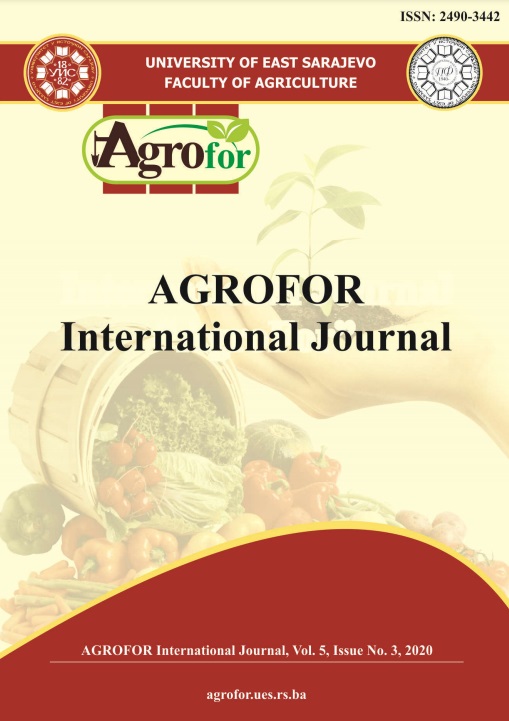THE EFFECT OF DIFFERENT NEW BEDDING MATERIALS ON AMMONIA EMISSION FROM DAIRY COW SLURRY
DOI:
https://doi.org/10.7251/AGRENG2003021HAbstract
Agriculture is the most significant source of Ammonia emission that causes e.g.
loss of Nitrogen from agricultural systems. Manure is the main source of Ammonia
emissions and causes losses in the nutrient cycles of agriculture as well as local
odour nuisance. By using different bedding materials, it is possible to reduce both
the Ammonia emissions and to improve the cycling of nutrient. Peat is known as an
effective litter material but its use as a virtually non-renewable resource is
questionable. Therefore, we need to find new bedding materials to replace peat. In
this study, the effect of ten different industrial by-products, reeds and stalks to
reduce Ammonia emissions was tested in laboratory in January 2020. Dairy cow
slurry and bedding materials were mixed in a volume ratio of 4:1. The Ammonia
emission was measured for two weeks once or twice a day. Measurements were
performed with a photoacoustic method. The results show that all tested materials
reduce the Ammonia emission from the cow slurry used. Interesting new materials
to substitute peat are zero fiber and briquetted textile waste. Wheat bran, pellets
made of reed canary grass and chopped bulrush had the best effect which is at the
same level as that of peat. However, no statistically significant differences between
the calculated emission rates were found.

